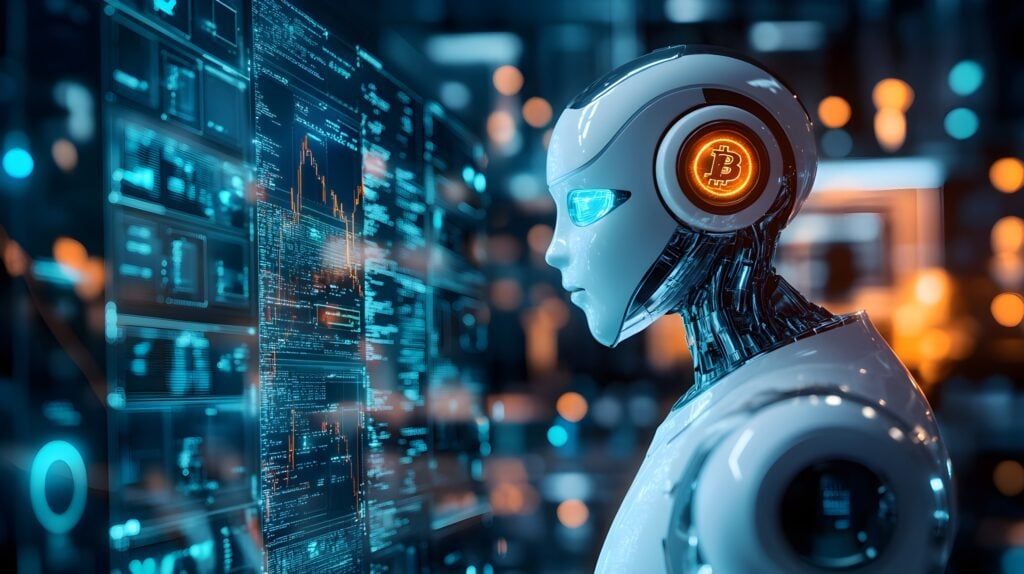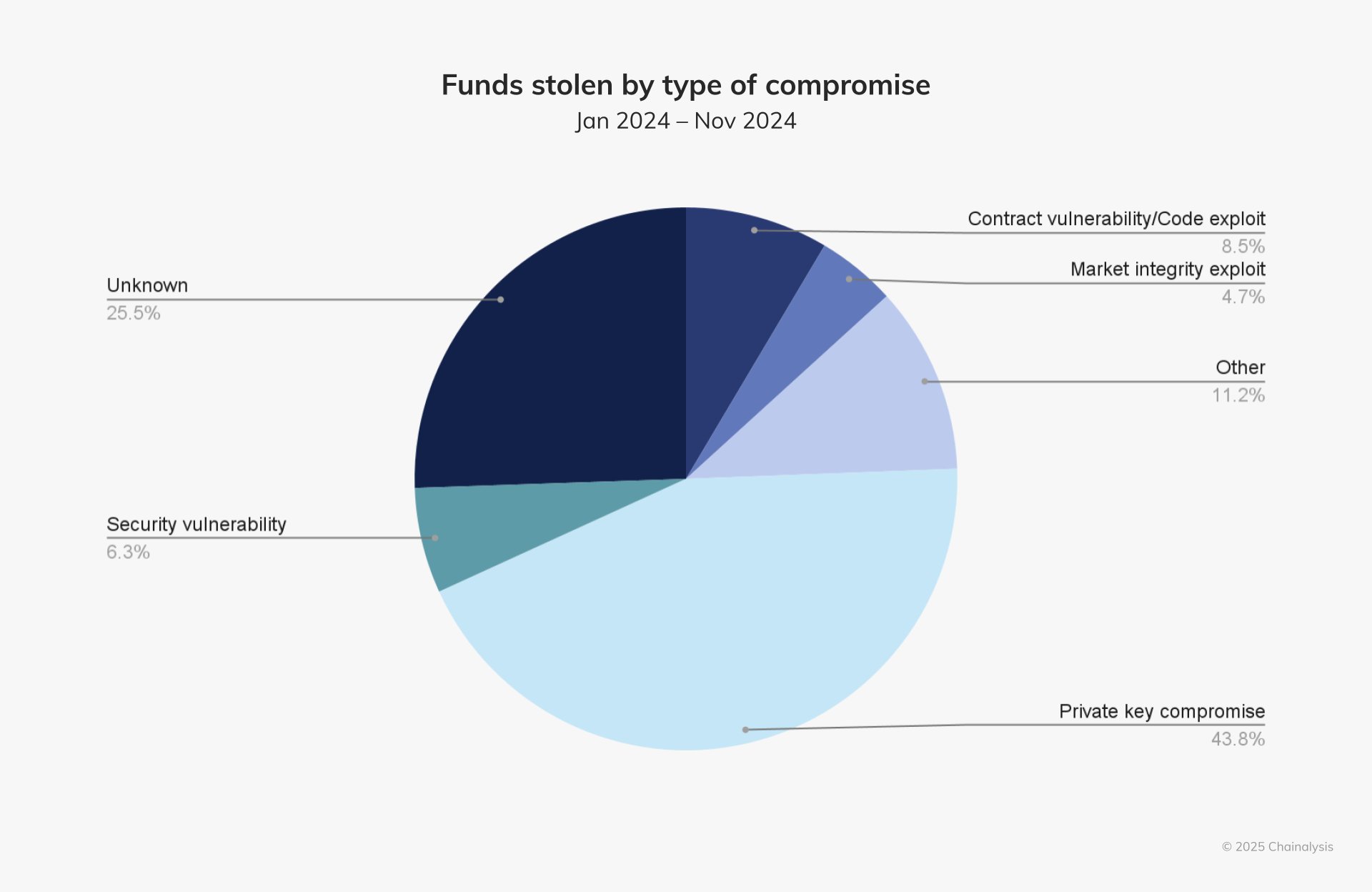
2025 will be the year of two global disruptive technologies: crypto and artificial intelligence. As the US gets ready to embrace a new administration that will embrace both sectors to drive innovation, it’s interesting to analyze how the US can use them for the best.
In an interesting essay called “AI, Crypto and America”, the managing partner at Collab Currency and co-founder of Glitch Marfa known on X as Derek Edws, analyzes these disrupting trends that will shape the future of humanity.
Collab Currency is a company backing early-stage Web3 projects that are building the next gen of culture and consumer technology. Glitch Marfa is an analog gallery for digital objects.
In his essay, Derek navigates the most important details of a new framework to match new realities.
America’s Opportunities
Derek begins his essay, by recalling how his mother left the Philippines when she was 21 years old, only with a degree and $50 in her pocket to navigate America with strong determination.
He detailed how every educational course became an investment for her professional agency, and every dollar raised became a brick of financial foundation. After earning her Master of Nursing at UCLA, she enjoyed a 40-year-long nursing career.
Such impressive mobilization was possible thanks to three main features that the US had to offer:
- An open economic system
- Incentivizing merit-based contributions
- Established property rights to protect ownership over newly generated wealth
Derek highlights that by working hard, outperforming, and storing wealth over a lifetime, anyone can enjoy a piece of the “American dream.”
However, he brings up the emerging truths of the future, including the accelerating trend of artificial intelligence and its disruptive potential on American labor, highlighting the necessity to start navigating towards a new framework to match the new reality.
The first step is understanding two of the most disruptive technological innovations over the past 20 years – AI and crypto.
Artificial Intelligence
About 30 years ago, Internet search engines were created with the value of retrieving the world’s data. After 25 years, OpenAI’s ChatGPT became the fastest-growing consumer application in history.
2025 statistics show that ChatGPT:
- Has over 300 million weekly active users
- Averages 123.5 million daily active users
- Processes over 1 billion queries per day
- Generated almost $3 billion in annual revenue in 2024
But what’s the value of such AI systems?
AI Systems Combine Retrieval with Completion
The value in AI systems such as ChatGPT relies on mixing retrieval with completion, meaning:
- Requesting any job using natural language
- Outsourcing the job’s completion to computer intelligence
Over the past years, AI systems’ advancements in completing these job requests became visible, especially across text, math, audio, video, geometry, and coding.
Dimensions for Scaling AI Models – New Robotics Advancements
More data and computing power introduced in these AI models translates into better results, with the next-gen reasoning models taking important steps to adapt to new tasks.
Also, new advancements in robotics make machines capable of performing complex physical tasks. Human-like hardware will most likely:
- Never get tired
- Never take weekends off
- Never go on strike
All this will raise productivity across various sectors, outpacing human counterparts’ abilities.
AI can be seen as a type of technological revolution with systems that can create value in ways previously thought impossible or impractical, Derek notes.
Positive Applications of AI
In his essay, Derek mentioned Anthropic CEO, Dario Amodei who wrote a work called “Machines of Loving Grace – How AI Could Transform the World for the Better” in which he explained that most people are underestimating how radical the upside of AI could be, while also addressing the risks.
Amodei addresses a brief list of positive applications of powerful AI that can enhance the quality of life:
- Biology and physical health
- Neuroscience and mental health
- Economic development and poverty
- Peace and governance
- Work and meaning
Creating Value Unburdened by Legacy Cost Structures
Amodei believes that in the next 5-10 years, humanity could benefit from the biological progress of the next 50-100 years thanks to AI. This could be done by offloading most human labor structures to AI-enabled systems.
Derek highlighted two trends that will become obvious to humans around the world:
- The cost of all intellectual labor will trend down to the cost of running AI systems.
- The cost of all physical labor will trend down to the cost of a robot’s mechanical parts.
The promise of AI technology is becoming clear with multiple benefits across every value category:
- Improving the quality of human life
- Benefitting from unbounded outcomes
- Having radically cheaper costs

With these statements in mind, Derek highlights two important issues:
- How can America with the AI revolution on its merits?
- How can individual Americans become a part of future AI systems, while recognizing the disruptive potential on human labor?
This is where crypto enters the picture.
Crypto
Back in 2008, Satoshi Nakamoto published the Bitcoin whitepaper, and the next year, in 2009, he mined the first Bitcoin block. This year, on January 3rd, Bitcoin celebrated its 16th anniversary of the Bitcoin Genesis Block.
Since its creation, Bitcoin has become the most powerful supercomputer in the world, with over 800 exahashes/second in January 2025, almost doubling from its 2024 levels.

Derek also noted that the Bitcoin network is larger than the combined network sizes of Amazon, Google, and Microsoft.
Bitcoin’s rising importance is mirrored by its rising value as well, with 2024 marking the year when BTC surpassed the important $100,000 level.
Also, Bitcoin became a global subject with multiple states planning for Strategic Bitcoin Reserves while the US is even organizing a Crypto Ball ahead of the Inauguration of Trump’s administration.
Blockchains’ LImitations
However, he addressed the reasons why today, blockchains are still clunky:
- Poorly written code can create theft vectors or zeroed-out account balances.
- Decentralized apps are difficult to use compared to legacy web apps.
- User mistakes in managing private keys can lead to stolen crypto.
At the end of 2024, Chainalysis noted that private key compromises accounted for the largest share of stolen crypto in 2024, at almost 44%.

However, even with these limitations, interaction with crypto is at an ATH.
Crypto Interaction Surges
According to a Security.org study from September 2024, 40% of Americans owned crypto, up from 30% recorded in 2023.
Also, over 23,600 monthly developers around the globe are actively contributing code to blockchains and blockchain-based apps, as of December 2024.
This is over 23 times more compared to the 1,000 monthly developers recorded ten years ago.
Binance, the most important crypto exchange in the world, delivered its own data following a 2024 study, highlighting that over 250 million users registered on the platform last year, mirroring increased adoption.
Derek highlights in his analysis the reasons for which crypto continues growing despite its limitations.
Top 5 Reasons for Crypto Growth
The crypto industry continues growing especially thanks to five essential features that cannot be replicated by any other database architecture on the planet.

1. Digital Ownership
Using blockchains, people can enjoy sovereign ownership over any digital object on the Internet – this means laying down a global digital property rights system for the first time in human history.
Blockchain-based databases are:
- Global
- Fully auditable
- Community-owned
- Tamper-proof
- Running 24/7 across the Internet
2. Coordination Incentives
Blockchain-based protocols are:
- Using autonomously executing contracts
- Wielding programmable incentives to coordinate new types of digital work on each network
Incentives are for those who:
- Use a product or service
- Provide economic security
- Contribute core code, provision marketplace supply/demand
- Refer others to the product or service
3. Frictionless Micropayments
Today, high transaction costs force most businesses to adopt business models including subscriptions, bundling, and ad-supported services.
This leads to:
- Constraints for business model innovation
- Restrictions of consumer-friendly alternatives that could unlock new product/service revenue
On the other hand, blockchain databases facilitate:
- Frictionless, 24/7, low-cost, digital payments on a global scale
- Bypassing digital payment inefficiencies
- Enabling low-fee, instant transactions without chargeback risks
4. Shared Standards
By using shared settlement standards on blockchains, various tokens, stablecoins, apps, games, and financial services can all compose with one another’s logic, highlighting important connections between individuals.
5. Distributed Security
Blockchain networks are distributed across various nodes all over the world, eliminating single points of failure.
This decentralized architecture makes it more difficult for malicious actors to compromise the network systems, as it requires control over a majority of nodes simultaneously.
Derek predicts that in around 10 years, the crypto economy will be sent exponentially higher thanks to the intersection of AI and crypto.
The Intersection Between AI and Crypto
Today’s race to create AGI is similar to the 1849 California gold rush which drew new investments into the region, Derek points out. AGI is a type of AI that matches or surpasses human cognitive capabilities across a vast range of cognitive tasks.
This time, the infrastructure defined to support AI is not located in a single region, but globally, with networks that:
- Encompass data
- Compute
- Train
- Deploy

The capital and computational power to build, train and optimize AI infrastructure is expensive, and accessible only to a few. For instance, training GPT3 was $4 million, while in GPT4’s training were invested tens of millions of dollars.
Derek believes that by orienting America’s AI infrastructure towards crypto’s five unique features, the following can be accomplished:
- Tempering the downsides of centralized AI
- Renewing the spirit of competition
Also combining AI’s infrastructure with crypto will lead to AI systems with:
- Better performance
- Greater transparency
- More equitable ownership
Regarding AI and Crypto Applications, the most important achievement that stands out are probably AI Agents.
AI Agents
Unlike “bots”, AI agents are unique and can reason on demand. They can:
- Analyze their own performance
- Adapt their strategies
- Fight through complex tasks
Derek believes that in 2025, AI agents will transform blockchain’s complex structure into seamless, natural language interactions that will:
- Increase protocol accessibility
- Safeguard users from their own mistakes
- Help developers deeply safer code
- Lower consumer churn across a complex decentralized web of products and services
Crypto/AI agents will make building or using any crypto product, across any blockchain, easier for humans.
Derek also brought up key management networks like Lit Protocol which will allow agents to roam over blockchains even when humans are not at the computer. Also, universal namespace networks like Cluster XYZ will connect every agent’s actions across every blockchain under one identity.
Onboarding the AI/Crypto Tech Revolution
Millions of new developers, artists, gamers, and users across any consumer segment will onboard this tech revolution.
Derek concluded his analysis by stating that by availing America’s AI efforts to crypto and blockchains, the country can bring back to life its legacy values of property rights ownership, openness, competition, and individual prosperity.







